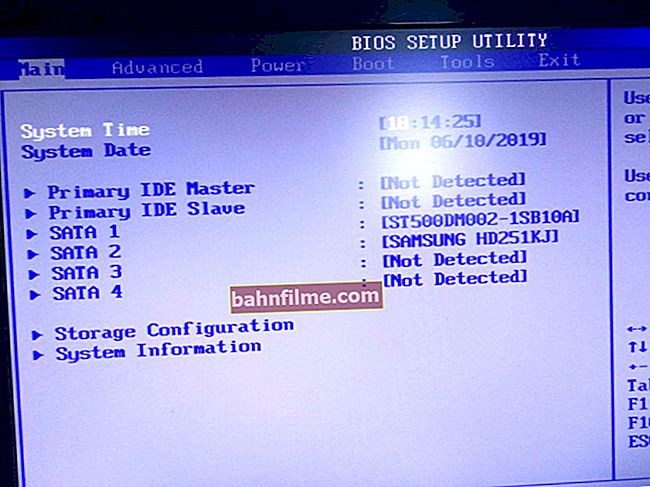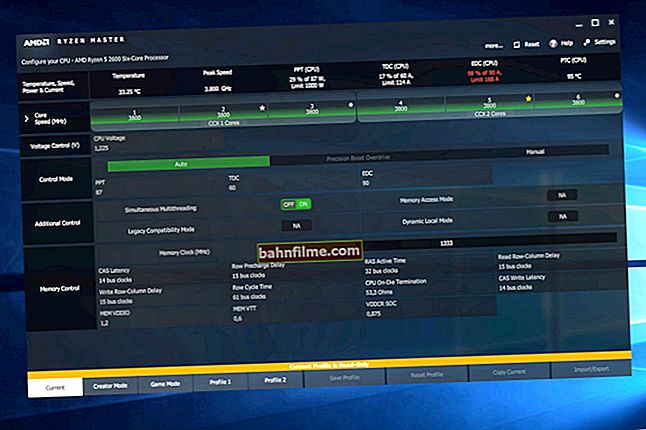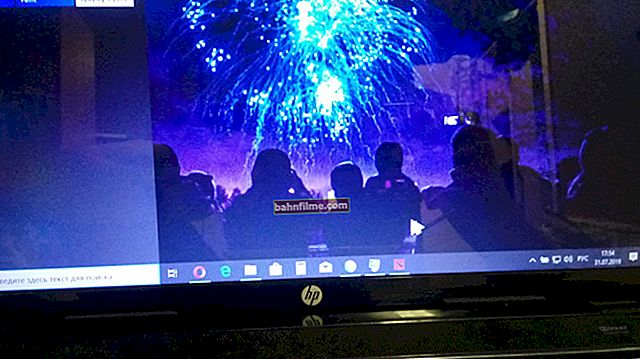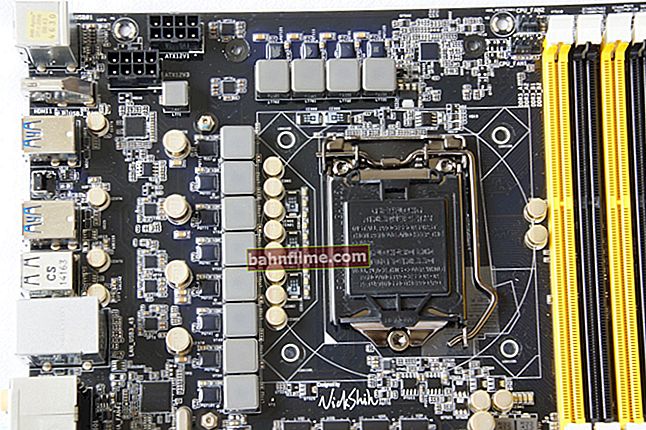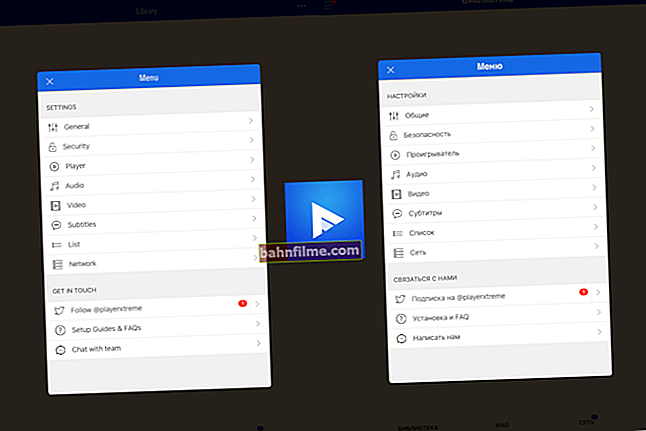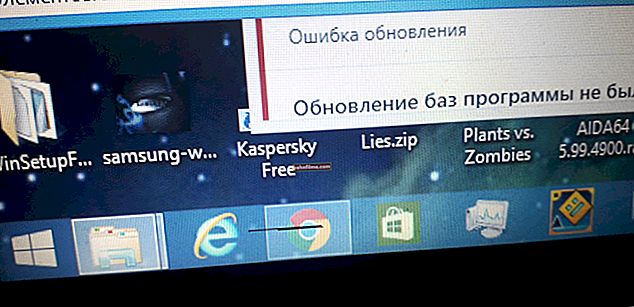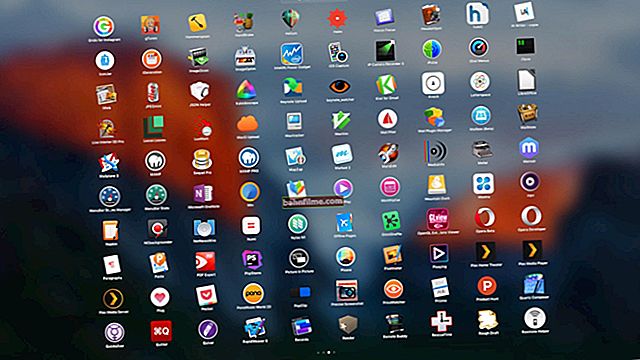 Good day everyone!
Good day everyone!
As a rule, when connecting and setting up the home Internet, you need to log into the router's web interface at least once by connecting to it with a network cable (via the LAN port). Especially, this applies to not the newest routers ...
In general, usually, problems arise more with the Wi-Fi setup than with the direct connection to the LAN port of devices ...
However, in a number of cases, interesting "incidents" occur: when I connected a computer / laptop and a router with a cable, but the network icon in Windows for some reason informs that there is no connection - the cable is not connected (and a red cross is lit on the icon  ).
).
In general, in this article I will consider in sequence all the steps for connecting a PC / laptop to the LAN port of the router. I think the article will be useful to all novice users who are trying to set up a home network.
So...
*
Connecting to a router with a LAN cable
The basics: step by step
I'll start right off the bat ...
The firstwhat we need (except for a router and a computer, of course) is a network cable. In general, usually, such a cable is included with the router (in 99% of cases).
Most often, the length of such a LAN cable [from the set] is no more than 1 ÷ 2 m. This length is quite enough [in most cases] to connect and configure the router.
Note! If you do not have it, or its length is clearly not enough, you can purchase it at any computer store. Moreover, in the same place you can ask to cut the cable for a specific length ...

Network cable (1-2 m. Cable is included with all routers)
Further connect the power adapter to the router and turn it on. Then plug into the jack "Internet" cable from your ISP.
One of the blue (they are often yellow) (LAN) ports must be connected to the LAN port of the laptop / PC.

Typical view of the router (D-Link)
*
If there is no Ethernet connector for the internet cable
With computers, as a rule, such problems do not arise. Most models have at least a built-in mat. the card is a network card, and its port is easy to find on the back of the system unit.
With laptops - everything may be a little different. The fact is that modern laptops usually connect to the Internet using a wireless Wi-Fi network, and not all devices have an Ethernet port (especially ultrabooks).
If you do not have a LAN port, then you need to purchase a special. USB adapter ...

We connect the cable to the laptop PC
There are a lot of such adapters: there are ports suitable for both classic USB 2.0 / USB 3.0 ports, there are also more universal (with support for LAN, HDMI, USB) for USB Type-C. See screenshot below. 👇
👉 Note!
You can buy such adapters for "pennies" in Chinese online stores.

Various options for network adapters for a laptop (for connecting to a router via a LAN port)
*
If the computer, and the router is turned on, everything is in order with the cable - then on the case of the router you should see several LEDs blinking (blinking): those responsible for power supply, LAN port, Internet (if the connection is established).

The LEDs on the router lit up (including the LED responsible for the LAN port)
Ideally, you should see a network icon of the network in the tray without any warnings (signaling that the connection to the router is established, the Internet is available).

Network icon (Windows 10). Everything is OK!
But, unfortunately, in a number of cases, the router does not always automatically start working immediately (sometimes without manual configuration - nothing at all) ...
*
If the exclamation mark is on the network icon (without Internet access)
Perhaps this is the most popular option (especially when connecting and configuring the router for the first time, for example, after changing equipment).
*
In this case, first of all, I recommend opening network connections and check if everything is in order there. To do this, press the combination of buttons Win + R and use the command ncpa.cpl (see the screen below 👇).

How to open network connections / ncpa.cpl command and Win + R
In the network connections window you need to open properties your connection (usually called "Ethernet" (as in my case 👇) or "Local Area Connection").

Adapter properties
Next, find the line "IP version 4" and open it properties ... Then put the sliders in the mode:
- obtain an IP address automatically;
- obtain the address of the DNS server automatically (in some cases, it is recommended that instead of the auto-option, specify DNS 8.8.8.8 - this is DNS from Google. More details here).
Save the settings and check the network operation.

IPv4 Properties - Get IP Address Automatically
*
The second important point - this is a check of the router settings. If you have not previously configured it - then, in principle, in most cases - the Internet will not exist until the connection parameters are specified.
Different providers have different requirements: as a rule, you can find the necessary logins and passwords, IP addresses, etc. parameters [that need to be entered in the router settings] in the agreement with the provider, which was concluded when connecting to the Internet.
👉 Help!
How to enter the settings of the router [just where you need to set the connection parameters] (for beginners)

Configuring PPPoE connection in the Tenda web interface (for connecting to the Internet)
In this regard, I will recommend one more article (on setting up and connecting a router from scratch). From it you can glean all the "omitted" moments ...
*
If a red cross is on the network icon

Network cable not connected - red cross (Windows 10 tray)
This icon means that you have no connection between the router and the computer (laptop). This can happen for various reasons. Below are the most common ones.
*
1) Check the condition of the cable
Is everything okay with him, is it not bent? It often happens that outwardly the cable may seem intact, but it has been severely bent several times, and the copper veins have been broken inside. Therefore, I would recommend trying a different cable.

The cable is bent (twisted)
2) Check if the cable is firmly plugged into the LAN port
Often due to small manufacturing deviations (as well as rubber gaskets, which are often placed on them, roughness, etc.) RJ-45 connectors and LAN ports - not always and not every connector is fully inserted into every port.
Ideally, after the connector has been inserted, you should hear a slight click (and on the PC / laptop network card, the LED should light up that the cable is connected (the same as on the router)).
If the PC has several LAN ports, try using another one.

RJ-45 connectors
3) Check if your network adapter is enabled
In Windows, it may become so that the network adapter will be turned off. To check if this is not the case, go to network connections (to do this, open the "Run" window with the Win + R combination, and use the ncpa.cpl command) .
Next, pay attention to which icon: the device is turned off, it is black and white (as in the screenshot below).
You can simply right-click on the adapter to see the operating status and turn on the device (if necessary). See example below.

Turn on the adapter / Network connections
I also recommend going to 👉 device manager (Win + R combination, and devmgmt.msc command) , and find your adapter in the tab "Network adapters" .
Then try to turn it off / on (just right-click on it). An example is shown below. 👇

Disable-enable device (device manager)
*
👉 Help!

If this does not help, I recommend that you read one of my previous articles, which explains why the Internet may not work via a network cable from a router.
*
That's all for now ...
Happy and fast connection to everyone!
Good luck!
👣
First published: 08/16/2018
Correction: 1.08.2020
